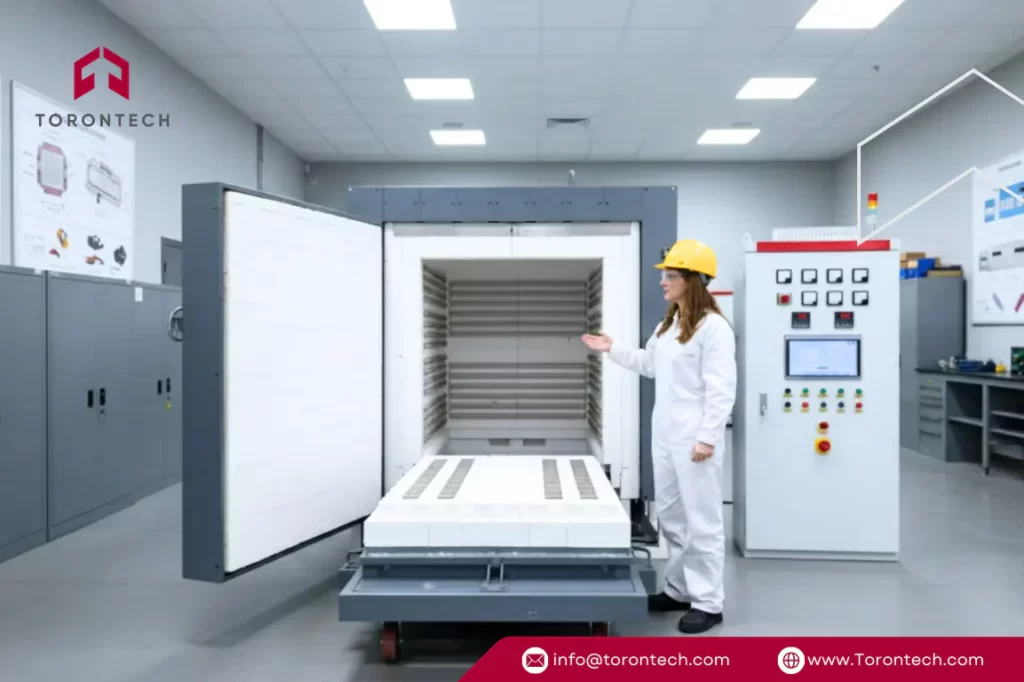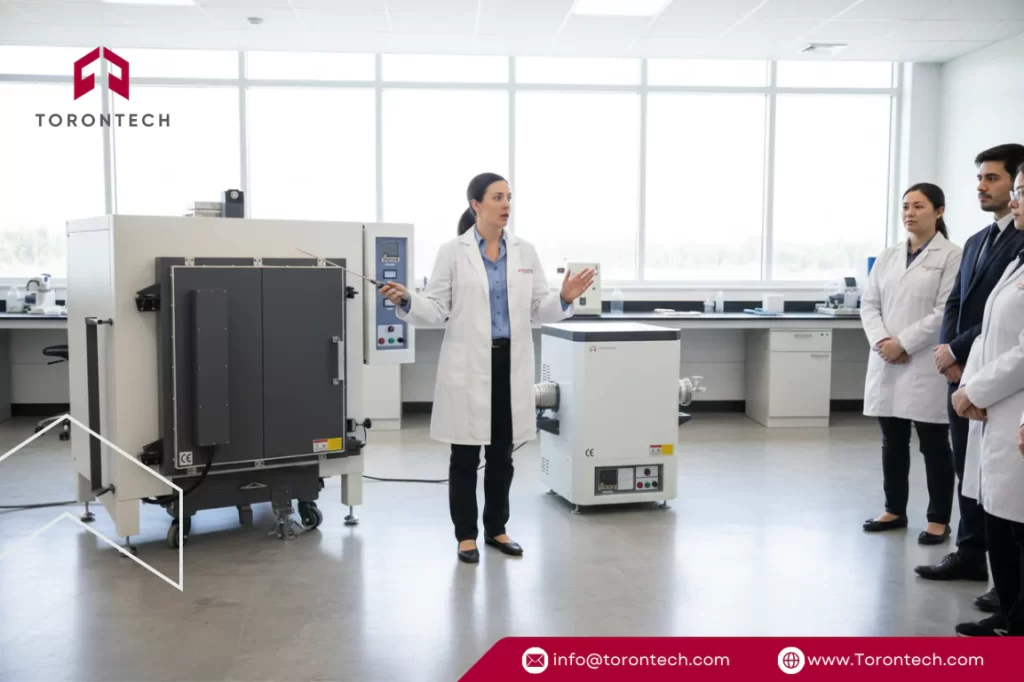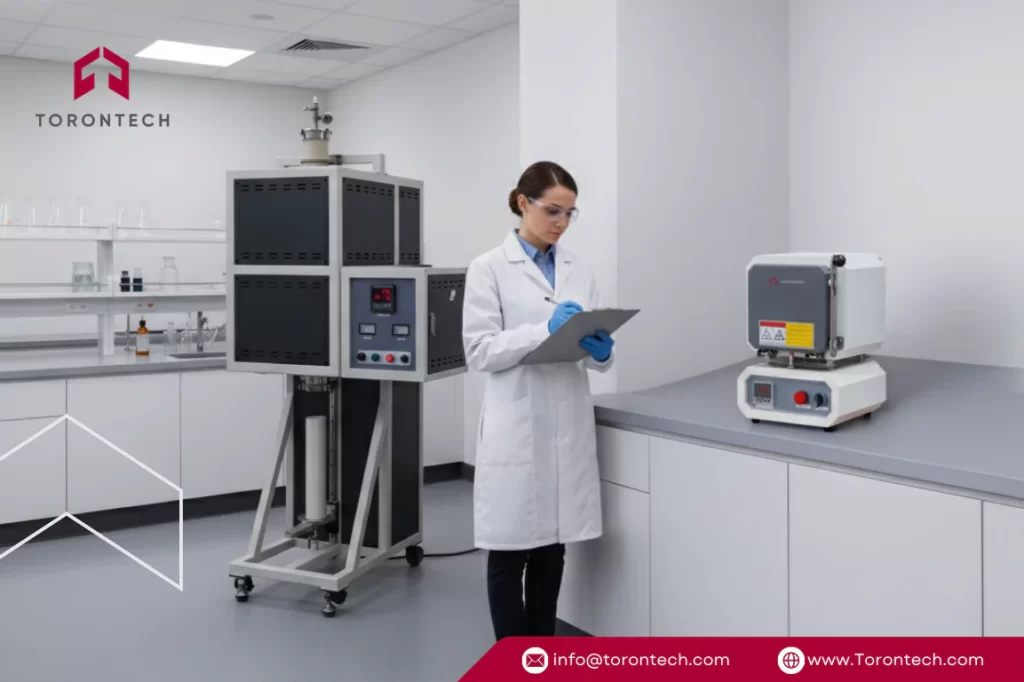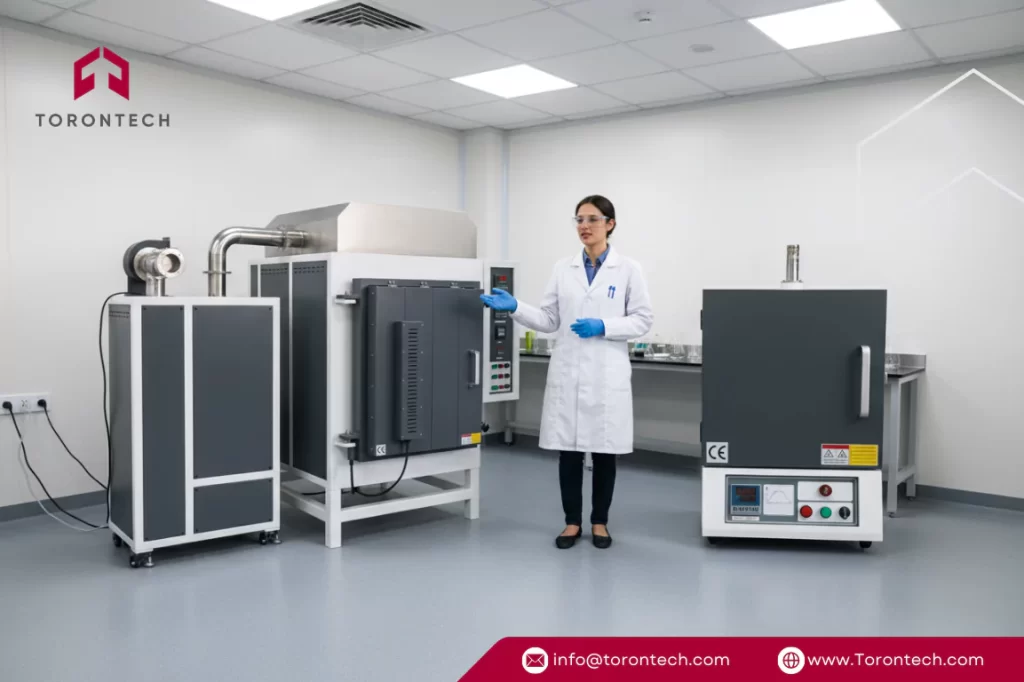With years of experience supplying heavy industry, we can say this directly: a well-built bogie hearth furnace makes many other heat treatment methods look inefficient and unpredictable.
When your operation handles large, heavy, or simply unwieldy components, the logistics of heat treatment can become a significant operational headache. This is precisely the problem the bogie hearth furnace solves, and in our professional opinion, it provides a practical solution that streamlines the entire process.
So, What Exactly is a Bogie Hearth Furnace?
The name might be unusual, but if you’re asking what is bogie hearth furnace, the concept is brilliantly simple.
A bogie hearth furnace is a high-temperature industrial oven built around a floor that moves. That’s its defining feature. The entire base of the furnace, the “bogie,” is a heavily reinforced, wheeled platform that can roll completely out of the main chamber.
This design effectively eliminates the difficulty of loading cumbersome parts into a fixed, hot space. Your team can arrange the workload on the bogie out in the open, with full access, before the platform glides back into the furnace. The simple bogie hearth furnace definition is an oven with a mobile floor for easier loading.
While the sliding bogie is the main idea, how the furnace is heated is just as important. They are generally available in two primary configurations:
- Electric Furnaces: These are the choice for precision environments. An electric model like our TT-BHF-660-1200A offers exacting temperature control in a clean, fume-free atmosphere.
- Gas-Fired Furnaces: These are the workhorses for demanding, high-volume jobs. Gas-fired units can generate high temperatures very quickly and are often a cost-effective solution for heavy industrial applications.
Related article: How to Choose a Furnace: Industrial vs Lab Guide
A Look at the Operational Workflow
The entire process is grounded in efficiency and logic. For a machine in our Torontech line, like the TT-BHF-455-1400, the sequence is as follows:
- Loading the Workload: Components are loaded onto the bogie while it is outside the furnace, allowing for unrestricted use of cranes and forklifts.
- Motorized Entry: The bogie and its workload are moved smoothly into the chamber. We insist on a controlled entry to prevent any shifting of the components.
- The Heating Phase: With the door sealed, the heating elements are activated. We favor a three-sided heating configuration to ensure uniform temperature.
- The Soaking Cycle: The components are held at a specific temperature to achieve the desired metallurgical results, like annealing or stress relieving.
- Controlled Exit: Once the cycle is complete, the bogie moves back out of the furnace for an orderly cooldown and straightforward unloading.
Key Operational Benefits
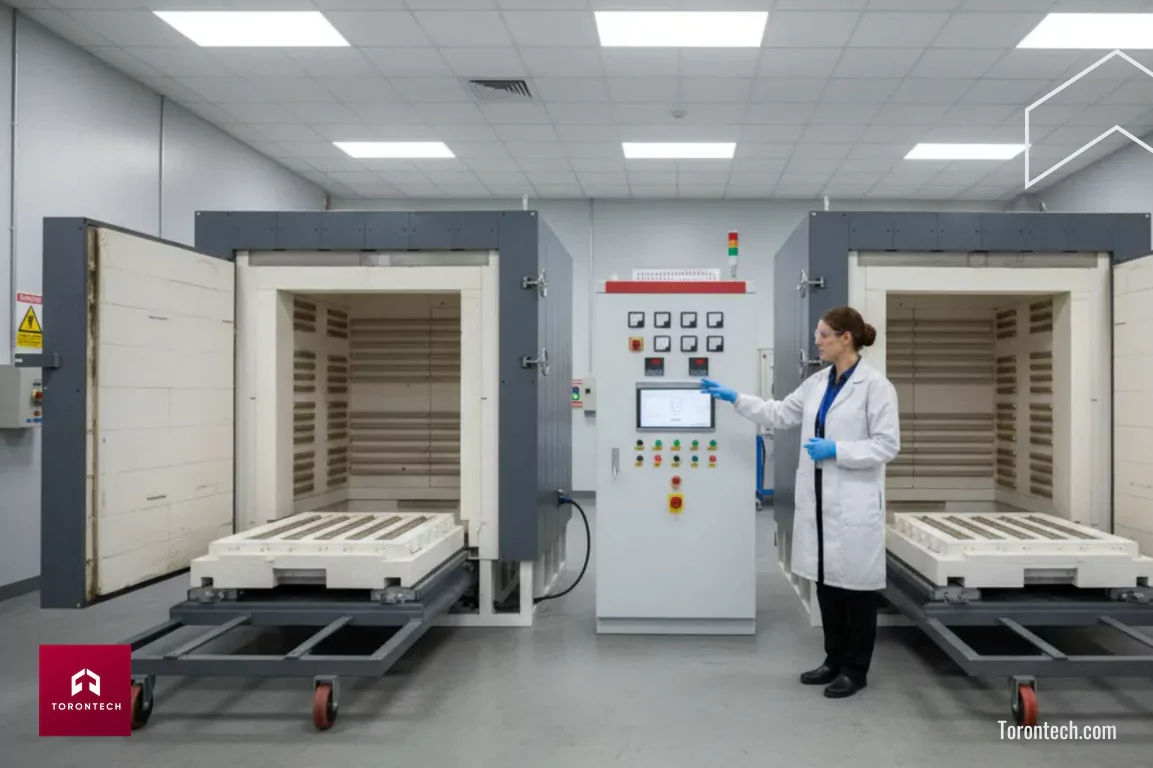
From our perspective, the advantages of a bogie hearth furnace go beyond simple convenience; they have a direct impact on your workflow and bottom line.
Unmatched Flexibility
The ability to handle a huge variety of part sizes and shapes is its greatest asset. What this really means is that a manufacturer isn’t limited by equipment constraints. A large furnace like our TT-BHF-1028-1300A can process a single massive casting or a full batch of smaller components with equal efficiency.
Improved Safety and Workflow
By moving the entire loading process into an open, ambient environment, you create an inherently safer condition for your operators. This also speeds up the material handling process, reducing the time between cycles and increasing overall throughput.
Consistent, Uniform Heating
The combination of a sealed chamber and well-placed heating elements creates a stable thermal environment. This leads to the highly uniform heat treatment that is a core part of the modern bogie hearth furnace definition.
Related article: Furnace vs Lab Ovens: Which Do You Really Need?
Features That Define Performance: A Deeper Look
Now that you see the benefits, here is how we deliver them. The real performance of a bogie hearth furnace comes from the quality of the components and the intelligence of the design.
The Control System: The Brain of the Operation
A basic controller can hold a temperature, but an advanced PLC-based system provides the precision and repeatability that professional operations demand. It allows your team to program complex thermal cycles and log data for quality control.
Insulation: Where Efficiency is Won or Lost
We believe the biggest impact on a furnace’s Total Cost of Ownership is its insulation. We use a multi-layer approach with high-density refractory materials and ceramic fiber. This leads directly to faster heat-up times and lower energy consumption.
Bogie Construction: Built for the Long Haul
The bogie platform endures the most punishing cycle of extreme heat and heavy loads. A well-engineered bogie, like those on our Bogie Hearth Car Bottom Furnaces, features a reinforced steel frame designed to prevent warping over thousands of cycles.
The Door Seal: A Small Detail with a Big Impact
An airtight door seal might seem like a minor point, but a poor seal is a constant source of problems. It creates temperature inconsistencies and allows heat to escape. A well-designed, tight-fitting seal is a mark of quality.
Common Industries and Applications
We see these furnaces as essential equipment across heavy industries where reliability is critical. These examples help answer the question of what is bogie hearth furnace technology used for in the real world.
1. Heavy Machinery & Steel Fabrication
For instance: A client manufactures large, complex earth-moving equipment. Their welded chassis must be stress-relieved. The only practical way is to load the entire chassis onto the bogie and apply a precise, uniform heating and cooling cycle.
2. Aerospace
For instance: An aerospace components manufacturer needs to heat-treat large aluminum bulkheads, requiring extremely precise temperature control and data logging to meet strict certifications. An electric bogie hearth furnace provides the necessary clean environment and advanced PLC controls.
3. Automotive
For instance: A tier-one supplier forges thousands of drivetrain components. They use a bogie hearth furnace to load several tons of forgings at once, ensuring the entire batch receives the exact same thermal treatment for consistent quality.
4. Technical Ceramics & Glass
For instance: A producer of large-format architectural glass needs to anneal massive panes. The bogie allows them to gently load the delicate glass, while the furnace’s controlled environment ensures a slow, precise cooling ramp.
A Cost-Effective Bogie Hearth Furnace by Torontech
We understand that acquiring capital equipment is a major decision. Our focus at Torontech is to supply our North American clients with dependable, high-value machinery. We stand behind the performance of our bogie hearth furnaces.
If you require a bogie hearth furnace that will meet your specifications and budget, we invite you to contact our technical team.
Need the Right Furnaces?
Explore cost-effective Torontech industrial and lab furnaces for reliable results.
Frequently Asked Questions (FAQ)
2. What materials are typically processed?
They are suited for a vast range of ferrous and non-ferrous metals, commonly used for treating heavy items like industrial castings, large forgings, and welded structures.
3. How does a bogie hearth furnace improve workplace safety?
By moving the loading and unloading process away from the hot chamber. In our experience, this is a critical benefit that leads to a much more controlled and secure working environment for operators.
4. Are Torontech's furnaces built for high energy efficiency?
Yes. We design them with energy conservation as a priority. High-performance insulation, effective seals, and smart control systems all work together to minimize heat loss and reduce energy costs.
5. Can a bogie hearth furnace be customized?
Certainly. We find that the majority of our clients have specific process requirements. Our furnaces can be adapted in their dimensions, load capacity, and control systems to match the exact needs of your operation.

